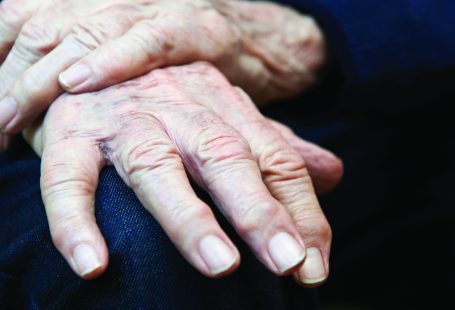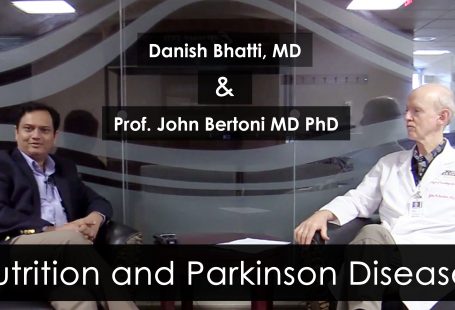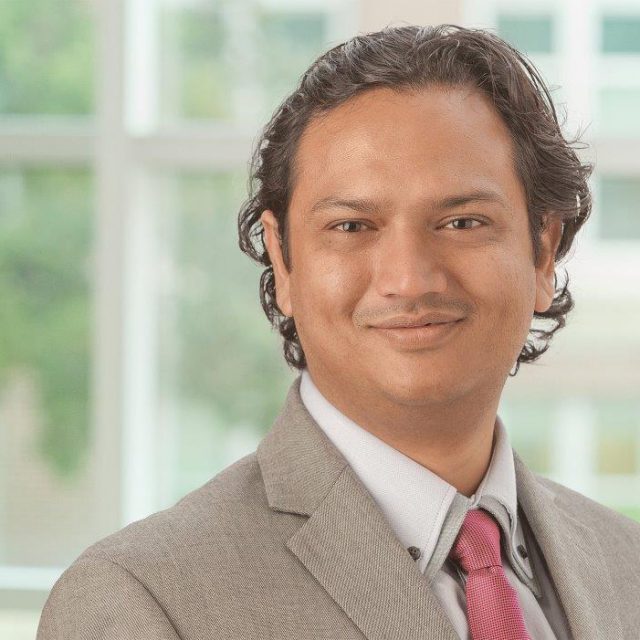
John Bertoni: I don’t know if I’m going to be duplicating myself but did I ever tell you the story? I didn’t see it marked that we had done it before, a podcast about doing Pneumoencephalograms.
Danish Bhatti: No, tell me about it.
John Bertoni: My fourth year of medical school at University of Michigan. We had really excellent neuro radiologists and I wanted to spend time with them. I think I may have been with them for somewhere between a month or two somewhere in that time and I did neuropathology that year. I did a 10 week experience in Newcastle upon Tyne in England with John Walton and Peter Hudson and actually a guy who became a friend of mine from Mayo Clinic and what I really liked was the time I spent in radiology. At the same time there was a neurosurgery resident. I won’t give you his name because this wasn’t really such a well done day that we had. We wer e doing Pneumo-Encephalograms. We did not have MRI scans at that time. And I think CAT scans were just coming in to play. So when we wanted to evaluate people with hydrocephalus, we would have them sit in a special chair. And there was a little square in the back about one foot square that we would actually remove that’s where we would do the LP (lumbar puncture) in their back and we would prep them with Betadine and then wipe that off with alcohol and then do the lumbar puncture after getting a consent form. And I think consent forms might have been mostly verbal then. I don’t know. They were probably not forms or maybe they were just a note saying I got consent. Not sure. Anyway, there was one lady that the neurosurgery resident was going to do a lumbar puncture on. And the idea was you would take off about 10 or 15 cc of spinal fluid and then we would push in 10 or 15 cc of air and we would take out some spinal fluid and then the air would bubble up since they were sitting upright up toward the fourth ventricle. And if you had them just right and you did it slowly, the air would actually get into the fourth ventricle. And then we could then somersault the patient and get the air into the lateral ventricles.
Danish Bhatti: Somersault on a chair or how to do somersault the patient.
John Bertoni: In this chair. Yeah, this is a chair. When in the old days, we used to have them sitting in a wooden chair and then two of us would pick them up and we would actually somersault them with the chair or just the patient. Well it would be a little chair like this that we’re sitting now and we would rotate them. And that’s what I learned in England and I think it was one of the early neurosurgeons that found out I can’t remember his name offhand, that in head tumors cases you could see air in the ventricles in some cases. if the air came in and got into the spinal fluid and they were I don’t know moved in different positions, you could actually get air into the lateral ventricles. And they would use that technique then to identify tumors in the brain in the ventricular system. You know you can imagine Choroid Plexus Papilloma and other tumors that were obstructing the ventricles now and then. At any rate that was the whole point of this exercise. So we wanted to see if this lady really did have normal pressure hydrocephalus. I don’t know the whole history but Lance was telling me about the case. And he was a year senior to me. And he was also from Ohio State University and I’m from University Michigan. And we were arch rivals in everything. So we used to not even want to talk to each other.
Danish Bhatti: But he was working at Michigan University.
John Bertoni: Yes he was in the Department of Neurosurgery as a neurosurgery resident. I was a neurology (resident), maybe he is a couple years older than me because I was like two years away from being a neurology resident. Anyway we were doing this rotation and he was talking to me about his, how great he was. And he was taking off like I think he was filling up, We usually did CSF evaluation when we did that. So we would collect the first tube and send it off to the lab. And I think he was collecting the first tube and I may have told you this offhand once but we were both sitting there. He was in the radiology you know lead apron kind of thing. And the procedure was obviously supposed to be sterile. And he had gloves on. And all of a sudden the lady who is facing away from us and we were talking like this and he was collecting the fluid. All of a sudden took a really deep breath and it was something like she didn’t exhale. And we thought that was kind of strange. So he was sterile. So I went around and I looked at this lady and both of her pupils were dilating to I don’t know maybe about nine millimeters. And I tried to wake her up and she was out and I said she’s fixed and dilated. And he came around and looked. So the question I ask when I talked to our residents or medical students. What’s your next move? What are you going to do when something like this happens? You’re doing a lumbar puncture. Somebody has immediately fixed and dilated her pupils.
Danish Bhatti: Push in (water) CSF back because of the brain stem herniation, trying to push it back out
 John Bertoni: Well I know how we could do that. So he yelled at Millie. Millie was the little technician lady that was always getting super excited. So her arms were waving in the air you know. Quick get us some sterile saline or D5W or lactated ringers. I don’t know what it was. So she got a bottle, back then it was a bottle not a bag. And so we ripped off the top of that thing and he says give me a 20 CC or 40 CC syringe. It was glass. So he was holding one end and I was pouring this in. And then he put the plunger or the other end of it and he had a Leur lock adapter. So he took out the Stylet and screw this in and pushed 20 ml of lactated ringers or whatever it was as fast as he could. And within about five seconds we could hear the lady go ahhhhh. So I went around and looked and both pupils were coming down and she wwas starting to respond. And I said, OK the pupils aren’t dilated anymore. And he was on the phone and he got an operating room. He said we have to take her to the O.R. Now He’s a resident. (but) And you know he didn’t have to go through anybody. He just said, get me an operating room and back then the residents did procedures and attendings sometimes were there.
John Bertoni: Well I know how we could do that. So he yelled at Millie. Millie was the little technician lady that was always getting super excited. So her arms were waving in the air you know. Quick get us some sterile saline or D5W or lactated ringers. I don’t know what it was. So she got a bottle, back then it was a bottle not a bag. And so we ripped off the top of that thing and he says give me a 20 CC or 40 CC syringe. It was glass. So he was holding one end and I was pouring this in. And then he put the plunger or the other end of it and he had a Leur lock adapter. So he took out the Stylet and screw this in and pushed 20 ml of lactated ringers or whatever it was as fast as he could. And within about five seconds we could hear the lady go ahhhhh. So I went around and looked and both pupils were coming down and she wwas starting to respond. And I said, OK the pupils aren’t dilated anymore. And he was on the phone and he got an operating room. He said we have to take her to the O.R. Now He’s a resident. (but) And you know he didn’t have to go through anybody. He just said, get me an operating room and back then the residents did procedures and attendings sometimes were there.
Danish Bhatti: Sometimes, IF It wasn’t a golf day or something?
John Bertoni: Well, we saw something like this. I’m sure it attending would have come in the middle of the day. But I remember operating with a neurosurgery resident in my internship and there was a tumor in the back of the brain. That’s another story. I remember that really well. And he just called up the attending and told him what happened. But anyway back to this lady. We did an angiogram right away in the next room. The Pneumo-encephalography room was in one room and there was a connecting door and we just wheeled her in there. And she had a big glioma a butterfly glioma right across the corpus callosum. Since we didn’t have a scan to see what the problem was, you couldn’t see something like that on a plain x-ray, although we did use plain x-rays to see about shift of the brain from right to left or left to right.
Danish Bhatti: And this is before CAT scans became popular.
John Bertoni: Yes, because we used to you know roughly if you’re age 50 you have a 50 percent chance of having a calcified pineal gland and habenular commissure which you’re in the midline. So if there was more than a 0.3cm shift we knew that there was a significant shift. We were really good at getting that head lined up straight. But since it’s in the middle of the brain relatively you can turn the brain and it wouldn’t move that much. The problem was then seeing the inner table of the skull and you’d just measure with meters stick (not meters stick) but centimeter ruler. And if it was off like three millimeters you know it was or even maybe a little less. Two and a half maybe. So that was that was then. Anyway, I think she did fairly well. People with big gliomas like that don’t do very well even today. But I’ll never forget that. And when I tell other people that they think I’m making it up. I was there and it really happened. And it was amazing how quick it happened.
 Speaking of that there was another time when I was in Philadelphia that we had an elderly private physician that wanted to do a lumbar puncture on one of his patients. I think he was a neurologist but he didn’t want to do things like lumbar punctures anymore. So he was I don’t say that we kind of humored this guy but he wanted to do things. And you know, we didn’t think he should be doing those things. So I asked him what he wanted. He said, would you please do a lumbar puncture on this patient for me? And I was probably about your stage, you know having been out of residency about that long. And at any rate, I said no, I think the patient has increased intracranial pressure. You want to do a lumbar puncture to see if the patient has a brain tumor. I say well, why don’t you know; you don’t do a lumbar puncture to find that out? So then he asked other people and everybody I know, said no. But there was one neurosurgeon there. This is the Jefferson Medical College, who said, OK. And he did. And the patient herniated. And so they quickly had to take him to the O.R. and so my chairman came back to him and said what were you thinking about? And he said well, if a neurologist, you know consults me and asked me to do a procedure, I’ll do it for him, you know and he says, well you better think that over twice, because if you don’t think you should have it done on you or anybody you know then why do it?
Speaking of that there was another time when I was in Philadelphia that we had an elderly private physician that wanted to do a lumbar puncture on one of his patients. I think he was a neurologist but he didn’t want to do things like lumbar punctures anymore. So he was I don’t say that we kind of humored this guy but he wanted to do things. And you know, we didn’t think he should be doing those things. So I asked him what he wanted. He said, would you please do a lumbar puncture on this patient for me? And I was probably about your stage, you know having been out of residency about that long. And at any rate, I said no, I think the patient has increased intracranial pressure. You want to do a lumbar puncture to see if the patient has a brain tumor. I say well, why don’t you know; you don’t do a lumbar puncture to find that out? So then he asked other people and everybody I know, said no. But there was one neurosurgeon there. This is the Jefferson Medical College, who said, OK. And he did. And the patient herniated. And so they quickly had to take him to the O.R. and so my chairman came back to him and said what were you thinking about? And he said well, if a neurologist, you know consults me and asked me to do a procedure, I’ll do it for him, you know and he says, well you better think that over twice, because if you don’t think you should have it done on you or anybody you know then why do it?
So anyway actually the people I worked with were really good. This fellow that at least figured out what to do or the other thing he did was the patient herniated. He said, let’s flip her upside down. So we turned her and her head was down.
Danish Bhatti: That was with the resident and the chair has the capability to turn over.
John Bertoni: With that was the resident from the first case, they had the capability to do a somersault because you were able to somersault. Because the other thing that we did is once we got enough air in the upper part of the lateral ventricles, we wanted to get it into the temporal horn. So you had a forward somersault them so that the air would then go back into the temporal Horne’s because that’s where there was a lot of problem with enlarged ventricles and people that had let’s say, Alzheimer’s disease and other things. So anyway that was one of the things I did one day.





